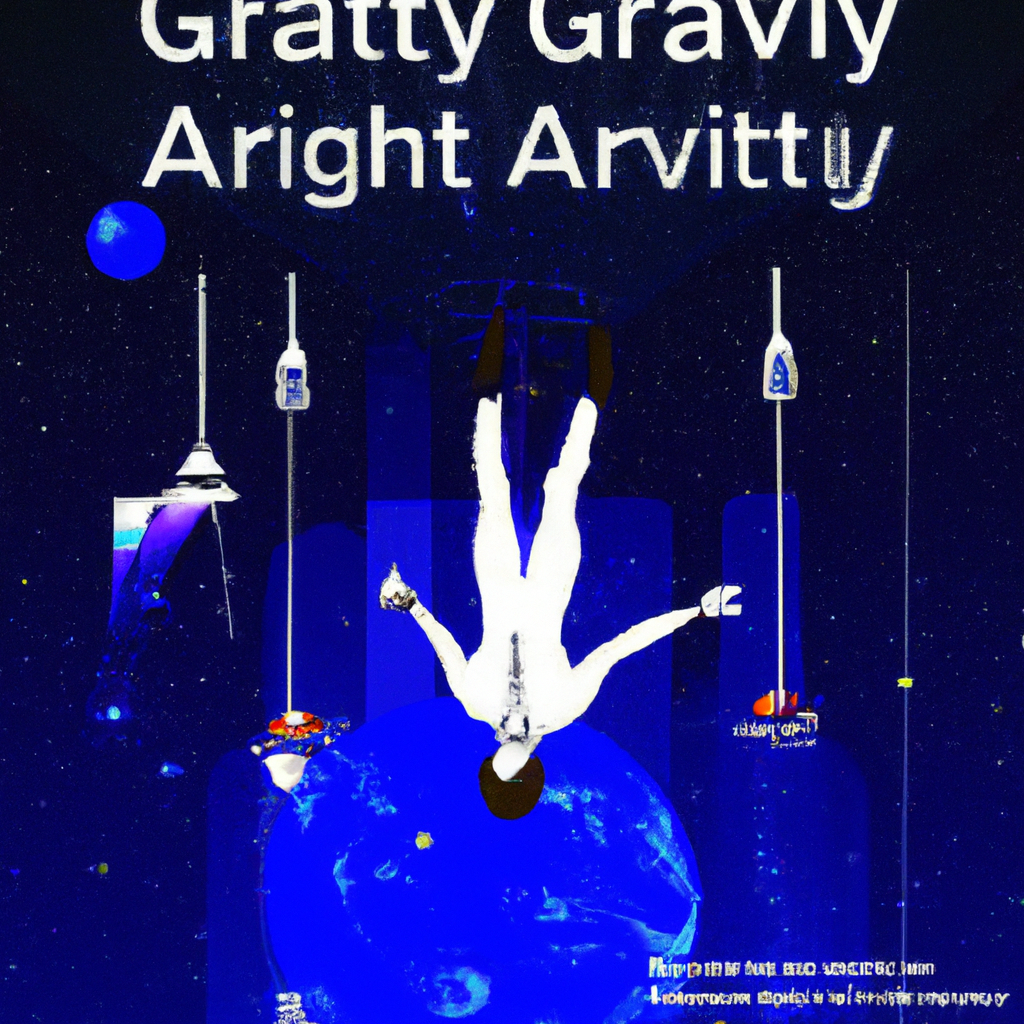Imagine embarking on a journey to outer space, where weightlessness hampers your body’s natural functions and poses various health challenges. Enter artificial gravity, a groundbreaking solution that holds the key to overcoming these woes and ensuring the well-being of future space travelers. With artificial gravity, we can recreate Earth’s gravitational force, enabling astronauts to maintain their overall health and strengthen their bones and muscles. In this article, we will explore how artificial gravity is revolutionizing space travel and addressing the health concerns of astronauts, promising a brighter future for interplanetary exploration.
Definition of Artificial Gravity
Theoretical concept of artificial gravity
Artificial gravity refers to the creation of a gravitational force in an environment where natural gravity is absent or insufficient. It is a concept that has long fascinated scientists and space enthusiasts, with the potential to address the health challenges associated with long-duration space travel. Instead of relying solely on Earth’s gravity, artificial gravity aims to provide a simulated gravitational force to counteract the negative effects of microgravity on the human body.
Importance of artificial gravity in space exploration
Space exploration has always been accompanied by the challenging issue of microgravity’s impact on human health. The prolonged exposure to microgravity leads to numerous health problems such as muscle atrophy, bone density loss, fluid shift, and impaired cardiovascular function. These health woes pose a significant hurdle to long-duration space travel, making artificial gravity a crucial consideration for future missions. By maintaining a simulated gravitational force, artificial gravity has the potential to mitigate the negative effects of microgravity and ensure the well-being of astronauts during their missions.
Effects of Microgravity on Human Health
Short-term effects of microgravity
Microgravity has profound effects on the human body, even in the short term. Astronauts experience significant changes in their bodily functions, such as fluid shifts towards the head, decreased muscle mass, and weakened immune system. Additionally, their sensory systems are profoundly affected, leading to issues with balance, coordination, and spatial orientation. These short-term effects can cause discomfort and pose challenges to conducting everyday tasks in space.
Long-term implications of living in space
Living in a microgravity environment for extended periods poses even more significant concerns for astronaut health. The persistent lack of gravitational forces accelerates bone density loss, leading to osteoporosis-like conditions. Muscle degradation occurs at a rapid pace, compromising strength and endurance. The cardiovascular system also suffers from the absence of gravity, leading to decreased heart function and increased risk of cardiovascular problems. These long-term implications demand the need for artificial gravity solutions to maintain astronauts’ health during extended space missions.
Effects on body systems
Microgravity primarily affects the musculoskeletal, cardiovascular, and sensory systems. Without the regular stress provided by gravity, bones and muscles lose density and mass, causing weakness and brittle bones. The cardiovascular system, which relies on gravity to distribute blood throughout the body, finds it challenging to adjust in a microgravity environment, leading to reduced heart function. The absence of gravity also disrupts the balance and orientation system, leading to difficulties in movement and coordination. These effects underpin the necessity of artificial gravity to mitigate the adverse impact on the human body.

Methods of Generating Artificial Gravity
Centrifugal force in spinning spacecraft
One of the most popular methods for generating artificial gravity in space is through the use of centrifugal force. By rotating a spacecraft, an outward force is created that simulates gravity. Astronauts inside the spacecraft experience a sensation of being pulled towards the walls, mimicking the gravitational force on Earth. This method has been a topic of scientific research and has shown promise in providing a consistent and controllable gravitational environment for long-duration space travel.
Magnetic fields and artificial gravity
Another method being explored for generating artificial gravity involves the use of magnetic fields. By employing superconducting magnets, it is possible to create a magnetic field that can exert a force on objects within it. By manipulating the magnetic field’s strength and direction, scientists can create a force that emulates the effects of gravity. While this method is still in the experimental stages, it has the potential to provide a gravity-like environment without the need for physical rotation.
Linear acceleration
Linear acceleration is a concept that involves constantly accelerating a spacecraft in a certain direction. This acceleration would create a sensation of gravity for the astronauts on board. Similar to centrifugal force, linear acceleration can provide a simulated gravitational force that counteracts the effects of microgravity. However, the practical implementation of this method poses several challenges, including the need for high acceleration rates and the potential discomfort experienced by the crew during constant acceleration.
Historical Attempts at Creating Artificial Gravity
Gemini missions’ experimentations
During the Gemini missions in the 1960s, NASA conducted a series of experiments to investigate the effects of artificial gravity on astronauts. They used a “Gimbal Rig” that spun the astronauts, causing them to experience centrifugal force and a simulated gravitational environment. The data collected from these experiments provided valuable insights into the potential benefits of artificial gravity and set the stage for further research.
Skylab’s proposed designs
Skylab, America’s first space station, incorporated the idea of artificial gravity into its design. Various concepts were proposed, including rotating sections of the station to generate centrifugal force. However, due to budget constraints and technical limitations, these design plans were never fully realized. Nevertheless, the concept of artificial gravity remained a topic of interest in space exploration.
Space Station Freedom proposal
In the 1980s, NASA’s proposed Space Station Freedom included plans for a rotating section that would create artificial gravity. The rotating section, known as the “Centrifuge Accommodation Module,” would provide a living and working area with a simulated gravitational force. Unfortunately, the cost and complexity of implementing the rotating section led to changes in the station’s design, and the concept of artificial gravity was once again put on hold.

Artificial Gravity in Modern Spacecraft Design
SpaceX’s Starship design
SpaceX’s Starship design, intended for future crewed missions to Mars, incorporates the concept of artificial gravity. The spacecraft is envisioned to have a spinning section that generates centrifugal force to provide a simulated gravity environment for the crew during the journey. This design innovation shows the recognition of the importance of artificial gravity in ensuring the health and well-being of astronauts during long-duration spaceflights.
NASA’s Lunar Gateway proposal
NASA’s Lunar Gateway, part of the Artemis program aiming to return astronauts to the Moon, also considers the inclusion of artificial gravity. The Gateway, a small space station in lunar orbit, could feature rotating modules that generate an artificial gravity environment. This forward-thinking approach acknowledges the potential benefits of artificial gravity in mitigating the health problems associated with prolonged stays in space.
China’s Tianzhou cargo spacecraft
China’s Tianzhou cargo spacecraft program has also explored the possibilities of implementing artificial gravity. Although primarily designed as a cargo resupply vehicle, the Tianzhou spacecraft has been proposed to include a rotating section that could provide a simulated gravity environment for experiments and future crewed missions. China’s interest in artificial gravity reflects the global recognition of the importance of addressing the health challenges of space travel.
Benefits of Artificial Gravity in Long Duration Spaceflights
Reducing health issues related to microgravity
The most significant benefit of artificial gravity in long-duration spaceflights is the reduction of health issues caused by microgravity. By providing a simulated gravitational force, artificial gravity can counteract the negative effects of microgravity on the musculoskeletal, cardiovascular, and sensory systems. This has the potential to mitigate bone density loss, muscle atrophy, and cardiovascular decline, ensuring the overall health and well-being of astronauts during lengthy missions.
Improving quality of life on spaceflights
Artificial gravity also has the potential to improve the quality of life for astronauts during spaceflights. The sensation of gravity can help alleviate the discomfort and disorientation caused by a lack of gravitational force. Astronauts would be able to move, sleep, and perform daily activities with much greater ease and familiarity, enhancing their overall well-being and enhancing their performance on mission-critical tasks.
Facilitating long-duration missions and interplanetary exploration
The implementation of artificial gravity could revolutionize long-duration space missions and enable ambitious interplanetary exploration. By addressing the health challenges associated with microgravity, artificial gravity would reduce astronauts’ recovery time upon returning to Earth and potentially enable them to stay in space for extended periods. This would open up new frontiers for human exploration, such as crewed missions to Mars and beyond, significantly advancing our understanding of the universe and the potential for human colonization.

Challenges of Implementing Artificial Gravity
Technical difficulties and engineering challenges
Implementing artificial gravity in spacecraft design poses significant technical and engineering challenges. Creating a rotating section within a spacecraft introduces complex mechanical and structural considerations. Ensuring the stability and balance of the rotation, managing the forces exerted on the spacecraft, and maintaining crew safety are all hurdles that must be overcome. Additionally, the design and construction of a rotating habitat must be optimized for long-duration space missions, taking into account factors such as power requirements, counteracting the Coriolis effect, and crew comfort.
Potential motion sickness and disorientation
The introduction of artificial gravity, particularly through rotation, can cause motion sickness and disorientation among crew members. The Coriolis effect, which manifests as a perceived force due to rotation, can induce dizziness and disorientation. Acclimating to the new gravitational environment may take time and potentially impact crew performance during the adjustment phase. Mitigating motion sickness and ensuring crew adaptation to artificial gravity would be crucial considerations in the successful implementation of this technology.
High costs and need for advanced technologies
Developing and integrating artificial gravity technology into spacecraft design comes with significant costs. The sophisticated systems required for generating artificial gravity, such as rotating sections or magnetic field generators, demand substantial financial investments in research and development. Additionally, advanced technologies and materials would be needed to ensure the feasibility and safety of artificial gravity implementation. The high costs associated with this technology pose a challenge to its widespread adoption and necessitate careful evaluation of its benefits relative to the expenses involved.
Ongoing Research and Development
Current studies on artificial gravity
Researchers around the world continue to explore and conduct studies on artificial gravity. From investigating the physiological effects of simulated gravitation on the human body to developing innovative engineering solutions, ongoing research aims to refine our understanding of artificial gravity and its implementation in space missions. Scientists are experimenting with various methods, such as centrifugal force, magnetic fields, and linear acceleration, to determine the most effective and efficient ways to generate artificial gravity for long-duration spaceflights.
Progress in space technology
Advancements in space technology play a pivotal role in the development of artificial gravity. As our understanding of the challenges and requirements of artificial gravity deepens, advancements in spacecraft design, materials science, and propulsion systems are aiding in the development of feasible solutions. Collaborations between space agencies, private companies, and academic institutions facilitate the progress of artificial gravity research and development, bringing us closer to realizing its potential benefits.
Future outlook for artificial gravity
The future of artificial gravity holds promise for revolutionizing space travel and exploration. As research and development efforts continue, improved technologies, design innovations, and cost-effective solutions are expected to emerge. Successful implementation of artificial gravity in space missions will pave the way for extended stays in space, interplanetary missions, and potentially human colonization of other planets. Continued collaboration and funding for artificial gravity research will be crucial in realizing this future outlook.

Ethical Considerations around Artificial Gravity
Possible inequality in access to artificial gravity
Ethical considerations arise when contemplating the implementation of artificial gravity in space missions. If artificial gravity technology becomes a standard feature in space exploration, there may be concerns about potential inequalities in access to this resource. Ensuring that all individuals involved in space travel have equal access to the benefits of artificial gravity would be an important ethical consideration, as it could impact the physical health and well-being of astronauts.
Potential psychological effects on astronauts
Artificial gravity, particularly if implemented through rotation, introduces new environmental factors that may affect astronauts psychologically. The disorientation and motion sickness experienced during the acclimation period could have implications for crew mental health and performance. Understanding and addressing the potential psychological effects of artificial gravity on astronauts will be crucial to ensure their well-being and the success of long-duration missions.
Responsibility and accountability for artificial gravity use and development
As with any emerging technology, the use and development of artificial gravity raise questions of responsibility and accountability. Transparent governance, robust safety protocols, and ethical frameworks must be established to guide the use and development of artificial gravity. Collaboration between space agencies, policymakers, and scientists is essential to define the roles and responsibilities of stakeholders and ensure the ethical and responsible use of this technology.
Conclusion: The Role of Artificial Gravity in Future Space Travel
Implications for human colonization of Mars and other planets
Artificial gravity holds tremendous potential for future space travel, particularly in the context of human colonization of Mars and other planets. By mitigating the adverse health effects of microgravity on astronauts during lengthy missions, artificial gravity can enable humans to establish long-term settlements on celestial bodies. This advancement could mark a significant leap forward in our exploration of the cosmos and pave the way for humanity’s expansion beyond Earth.
The importance of ongoing research and development
To fully harness the benefits of artificial gravity and address the challenges it presents, continued research and development are crucial. Ongoing studies, technological advancements, and collaborations across scientific disciplines should be prioritized to refine our understanding of artificial gravity and improve its implementation. The commitment to long-term research and development will shape the future of space travel and exploration.
Potential impact on the future of space exploration
The successful implementation of artificial gravity has the potential to revolutionize space exploration as we know it. By ensuring the health and well-being of astronauts on long-duration missions, artificial gravity can extend the reach and duration of human exploration, enabling ambitious missions to other planets and even beyond our solar system. The realization of an artificial gravity system would signify a remarkable milestone in our quest to unravel the mysteries of the universe and secure the future of humanity in the cosmos.











